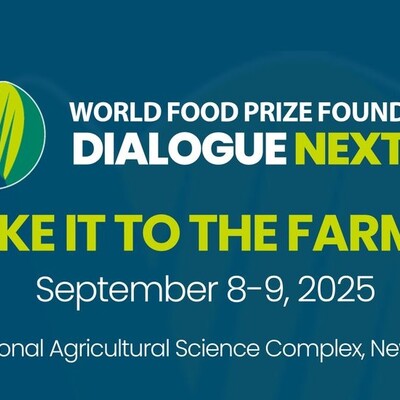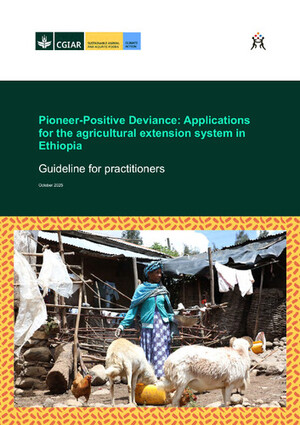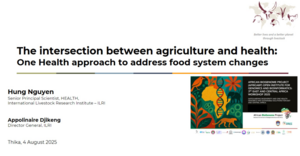
Livestock’s future: An opportunity not a threat

Some of the livestock sector’s numerous roles (credit: ILRI).
The World Economic Forum’s Shaping the Future initiative published a white paper prepared by the International Livestock Research Institute (ILRI) on livestock’s role in the developing world
The World Economic Forum (WEF) invited ILRI to prepare a white paper on the future of livestock. Published under the auspices of the WEF’s Shaping the Future of Food initiative, which focuses on how to develop inclusive, sustainable and nutritious food systems, ILRI’s paper addresses opportunities for the livestock sector to sustainably meet the growing demand for animal source foods in developing and emerging economies to 2030 and beyond.
The paper focuses on four critical issues related to livestock in the developing world: First, the continuing rapid growth of demand for animal-sourced foods, especially in Africa and Asia; second, the multiple roles that livestock play, not just as food but as ‘living animal assets,’ essential livelihoods and critical nutritional sources; third, the pros and cons for development of the four main pathways by which that growing demand is likely to be met; and finally, the many issues that stakeholders within and beyond the livestock sector need to address to ensure that all of the world’s people today and in the future are fed in ways that are sustainable, safe, equitable and healthy.
While the potential harms of raising livestock and consuming meat, milk, and eggs are frequently discussed in the Western media, their benefits for people in developing countries get less attention. This paper was written in part as a reminder that there are many opportunities for livestock to be part of a sustainable, broad-based and environmentally friendly agricultural sector. Its message is straightforward: ‘The good news is this: Partly because of the multiple roles livestock play in developing and emerging economies, there are “win-win-win” opportunities to harness the diversity of the developing world’s livestock production systems to meet rising demand, improve incomes and livelihoods, and alleviate threats to human and environmental health.’
A few highlights from the paper:
- Aggregate demand for livestock-derived foods is rising fast across Africa and Asia, driven largely by population growth in Africa and rising incomes in Asia, but remains low by western standards. For example, the average per capita consumption of meat in Africa is less than one-sixth that of the Organisation for Economic Co-operation and Development (OECD) countries (other estimates place it as low as one-tenth).
- In the developing world, livestock are much more than just food: They are central to local economies, contribute significantly to agricultural GDP, provide critical protein and nutrients otherwise unavailable, and support viable livelihoods for nearly a billion people, allowing them to make better dietary and health choices.
- Livestock are raised in widely different ways around the world. This diversity can be a source of strength, enabling farmers to develop livestock/animal production, processing and marketing systems that are safer and more sustainable, responsible and efficient. For emerging and developing nations, where farms of less than 20 hectares supply most of the livestock-derived foods as well as the cereals consumed in these countries, four main options are available for increasing production: Intensification of existing systems; development of western-style, industrial farms; importation of more livestock-derived foods; and possibly in the longer-term future, use of alternate forms of protein, such as lab-based meat.
- As the access to and availability of milk, meat and eggs increases for poorer populations, policymakers will need to promote sensible, balanced consumption as well as messaging that incorporates dietary, environmental, public health and animal welfare dimensions. Governments will face a plethora of trade-offs in implementing policies that support a vibrant transformation of the livestock sector.
The paper concludes by exhorting the entrepreneurs, philanthropists and policymakers assembled at Davos to consider livestock not as a problem to be solved but rather as an essential part of the solution to our protein and other needs. The diversity of livestock systems and the multitude of enablers for transformation mean that there will not be a single silver bullet. But making use of that diversity along with the many ‘enablers for transformation’ creates opportunities to make rapid progress in sustainable and equitable development. Some of those opportunities are already coming into view—others are as yet unimagined. Sustained cooperation and consultations, guided by wise investments from donors, policymakers, the private sector—and not least, farmers themselves—will move the sector forward along multiple paths. These paths can and should lead us to the same end goal, the paper concludes: ‘Towards more nourishing, accessible, affordable, safe and sustainable food systems for all the world’s people.’
Download the full paper: Meat: the Future series–options for the livestock sector in developing and emerging economies to 2030 and beyond



















